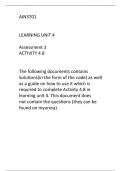Summary
Summary A-level geography carbon cycle and energy security powerpoint
- Institution
- PEARSON (PEARSON)
A detailed and in-depth PowerPoint covering the entirety of the carbon cycle and energy security topic in A-level geography made specifically for the Edexcel exam board. Includes easy-to-read and condensed notes with case study examples to use. Made by a 2023 A* Geography student.
[Show more]












